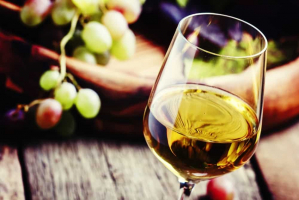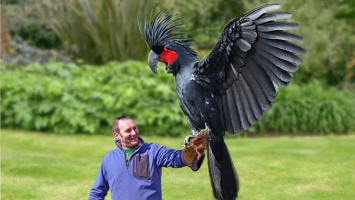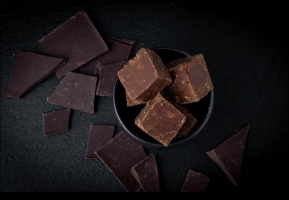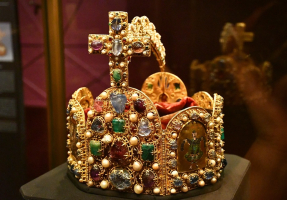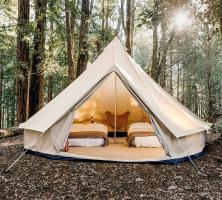Top 9 Most Expensive Wood Species
Wooden objects are frequently admired. When it comes to furniture, living room decoration, and even flooring and ceilings for your lovely home, you can never ... read more...go wrong with wood. It produces a one-of-a-kind and elegant result, and as a result, it never goes out of style. If you enjoy fancy items, here are the world's most expensive woods.
-
African blackwood is in a class by itself when it comes to the combination of tonal qualities, look, density, and high price. The trees are mostly found in Mozambique and Tanzania, and the wood is generally used for woodwind instruments, turnings, and small pieces of furniture. It's a Dalbergia, which is one of the rarest rosewoods. The logs are often small and have a large hole in them.
African blackwood, also known as grenadillo or mpingo, is a small tree that grows to approximately 25 feet tall and seldom exceeds 40 feet. The tree's fluted trunk makes it easy to spot. It is mostly found in East African savannas. Mozambique is the most abundant source of African blackwood. Guitars and woodwind instruments like clarinets, flutes, and bagpipes benefit from the wood's rich tone. Knife handles, duck calls, and chess pieces are all made from it. Except for the island of Madagascar, the tree is the sole Dalbergia species on the African continent.
African blackwood is a type of rosewood that is extremely dry. It's not like cocobolo, which contains a lot of water. The climate in Mozambique where it grows is quite dry. It's not a shrub; instead, it resembles a larger mesquite tree. Because the permissions to obtain African blackwood in Mozambique and Tanzania became increasingly hard to have, therefore, there are fewer and fewer companies providing that type of wood.
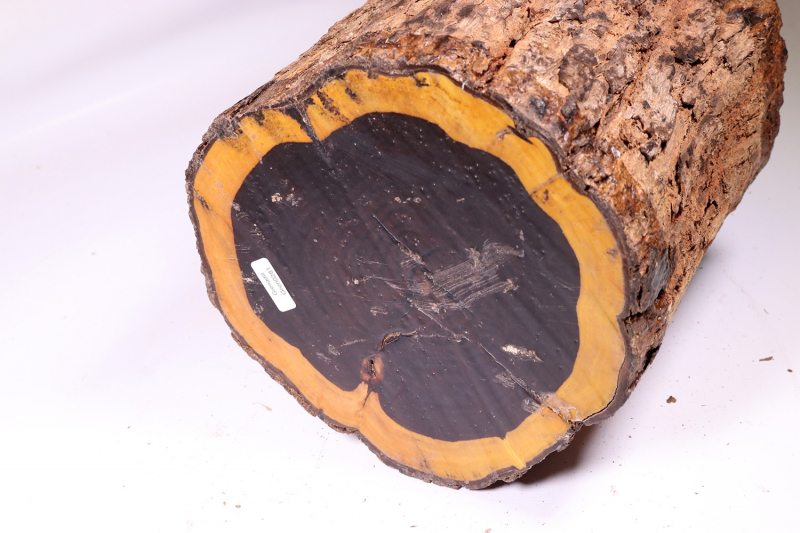
feinesholz.de 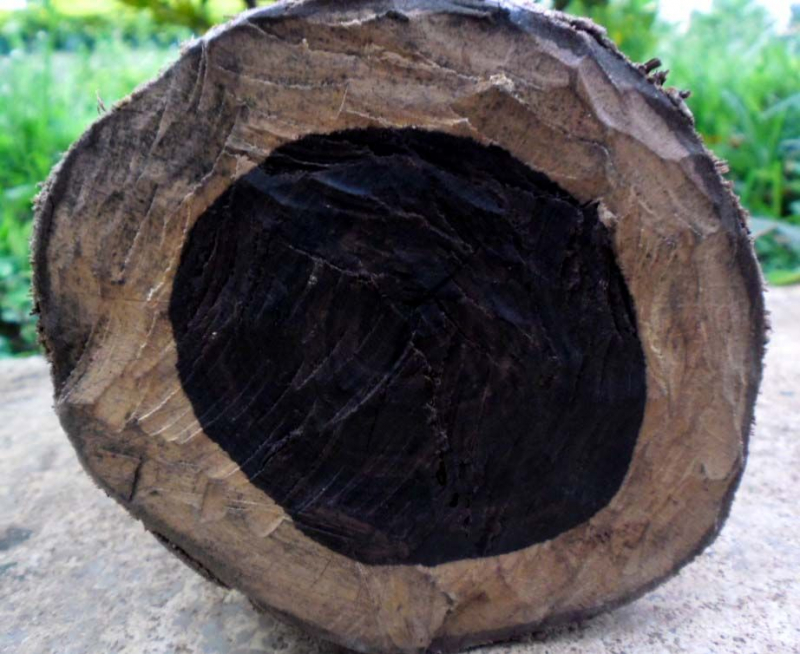
pinterest.com -
Sandalwood is a type of wood coming from the Santalum genus of plants. The woods are heavy, golden, and fine-grained, and they hold their fragrance for decades, unlike many other aromatic kinds of wood. For use, sandalwood oil is produced from the woods. Sandalwood is frequently referred to as one of the world's most expensive woods. Both the wood and the oil give out a distinct scent that has been highly prized for generations. As a result, some of these slow-growing tree species have been over-harvested in the past.
Sandalwood is more expensive than other types of wood, thus instead of chopping it down at the trunk close to ground level, the entire tree is removed to maximize profit. This allows for the processing and sale of wood from the stump and root, which contains significant levels of sandalwood oil.
The majority of Australian sandalwood is harvested and sold in log form, with heartwood content evaluated. The white sapwood of this species is unique in that it does not need to be removed before the oil can be distilled. The logs are either distilled for essential oil or ground into powder for incense manufacturing. The sapwood must be removed before distillation of Indian sandalwood, which is mostly utilized for oil extraction. Sandalwood oil from Australia costs roughly US$1,500 per kilogram in 2020, but Indian Sandalwood oil costs around US$2,500 per kilogram due to its greater alpha santalol content.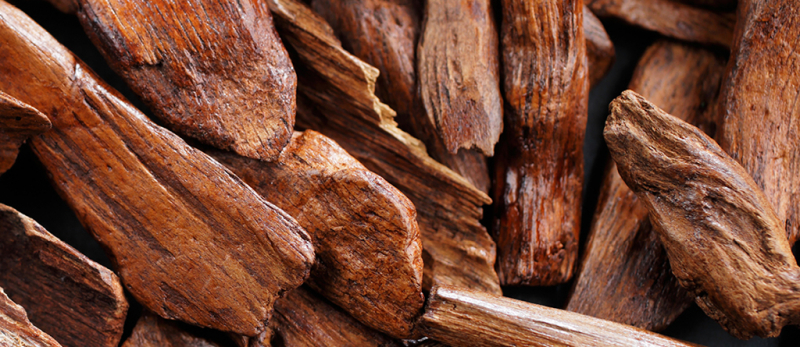
carrementbelle.com 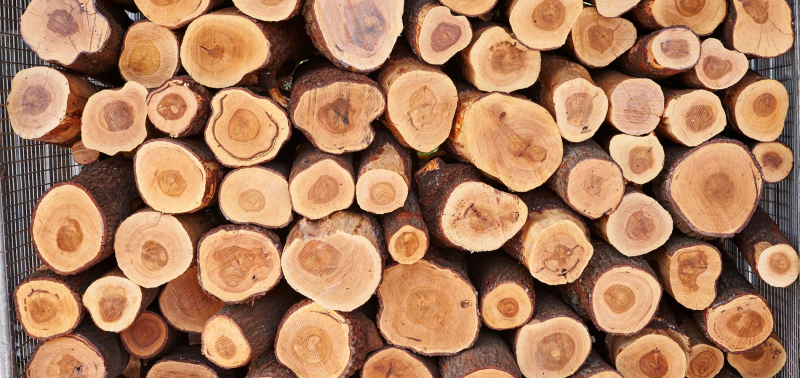
quintis.com.au -
Pink Ivory is a vibrantly colored, rich, and exceptional wood that is widely regarded as one of the world's rarest woods. If you weren't a Zulu king, having the wood was once punishable by death. Tree heights range from 20-35 feet tall, with diameters ranging from 6" to 12" and resembling brush more than a typical tree. Because of its diminutive size, the yield is low, adding to the species' rarity. A huge board that is free of faults after sawing and drying could be as large as 24" long x 2-4" wide x 1" thick. The southeastern African lowlands are littered with pink ivory. The gorgeous watermelon pinkish-red color is only produced by the heartwood.
Until the Anglo-Zulu War of 1879, pink ivory was the Zulu people's royal tree, and only members of the royal family were allowed to own it. Prior to the Anglo-Zulu War, the Zulu king would wield a pink ivory knob kerry, a stick with a knob on one end, and wear pink ivory jewelry.
The fruit of the pink ivory tree is a delectable yellow, brownish, reddish, or purplish drupe. Other portions of the tree have been utilized as cures and medications in the past.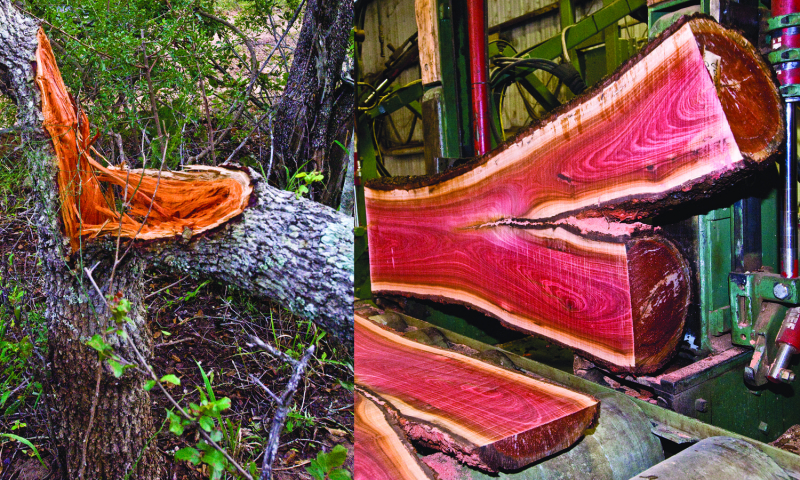
pinterest.com 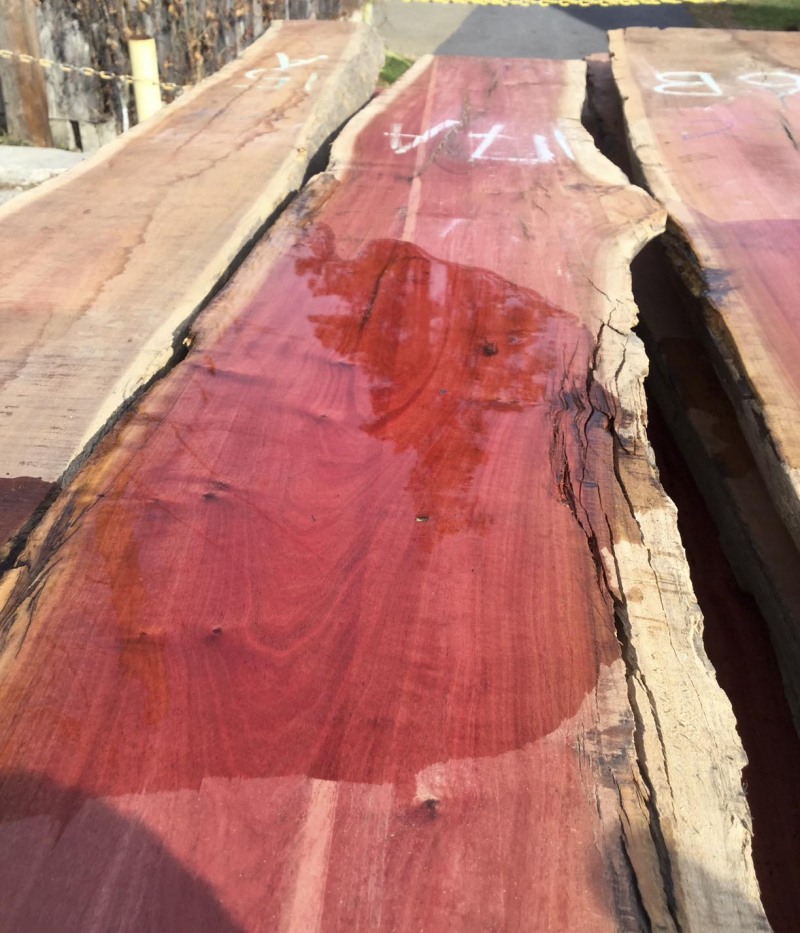
hearnehardwoods.com -
Purpleheart is a strong and long-lasting wood that comes from the Peltogyne genus, which includes 23 species of huge trees endemic to the borderlands between Mexico and Brazil. It's well renowned for its stunning grain pattern and one-of-a-kind hue that's hard to find in other woods. The strength, density, and durability of Purpleheart wood's timber structure are among its distinguishing traits. Purpleheart is one of the strongest and densest trees on the market, and it may easily be called one of the strongest and densest trees available. However, the toughness of the wood and the natural oils contained within its structure can harm processing equipment, dulling saw blades and clogging cutting and drilling tools with glue. Even with that inconvenience factored in, Purplewood's outstanding visual appeal and strength make it one of the most exotic trees native to Central and South America.
Purpleheart wood's internal structure is made up of greyish-purple hardwood that gradually turns violet purple and then deep purple over time. This alteration is linked to the presence of ultraviolet light, which causes the wood's top layer to change. Purpleheart wood can be treated with an anti-UV coating or sanded to reduce color change. The natural luster is high, with a straight grain that looks excellent on the surface but might present problems while cutting and drilling.
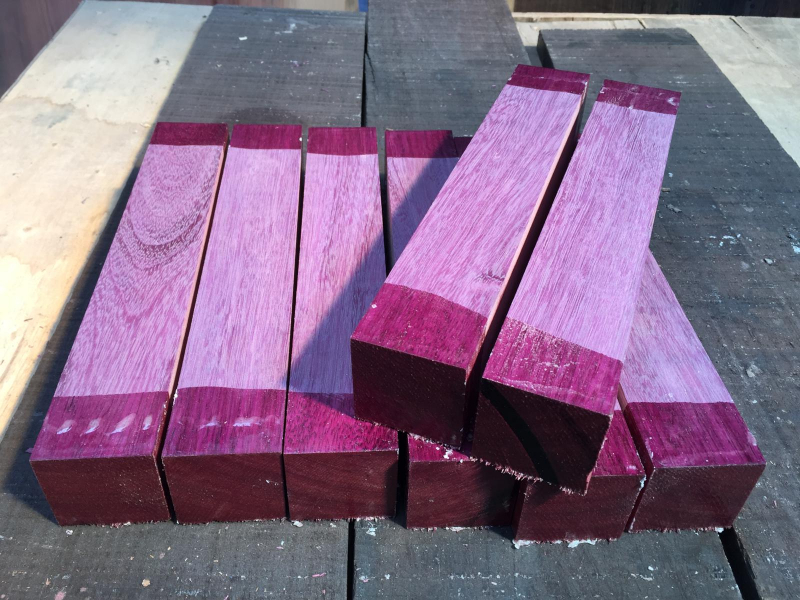
woodwiseuk.co.uk 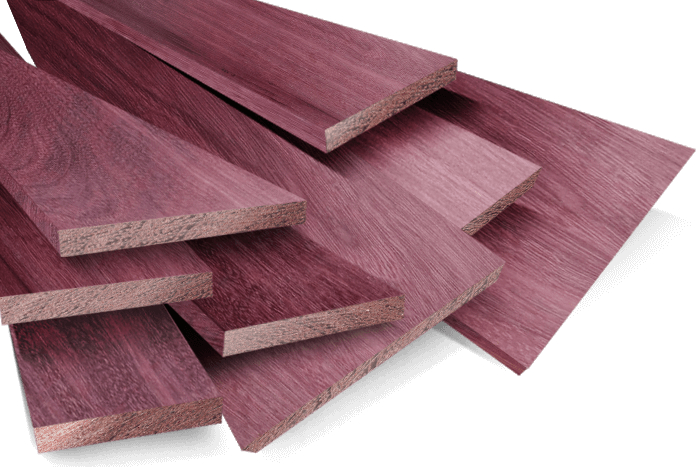
bellforestproducts.com -
Lignum Vitae is a type of wood from the genus Guaiacum, sometimes known as Guayacan or Guaiacum, and known as Pockholz or Pokeout in areas of Europe. The trees are native to the Caribbean and the northern coast of South America, and they have been a valuable export crop to Europe since the 16th century. Wood was previously a popular choice for applications that required a material with a unique combination of strength, toughness, and density. It is also the national tree of the Bahamas.
Because of its high density, Lignum Vitae is usually used to make cricket bails, particularly "heavy bails" used in windy days. It's also used to produce croquet mallets, lawn bowls, and skittles balls. The wood has also been used as mortars and pestles, as well as for wood carvers' mallets, in the past.
Due to its density and strength paired with the relative softness of wood compared to metal, it was the traditional wood used for the British police truncheon until recently, tending to bruise or stun rather than merely cutting the flesh.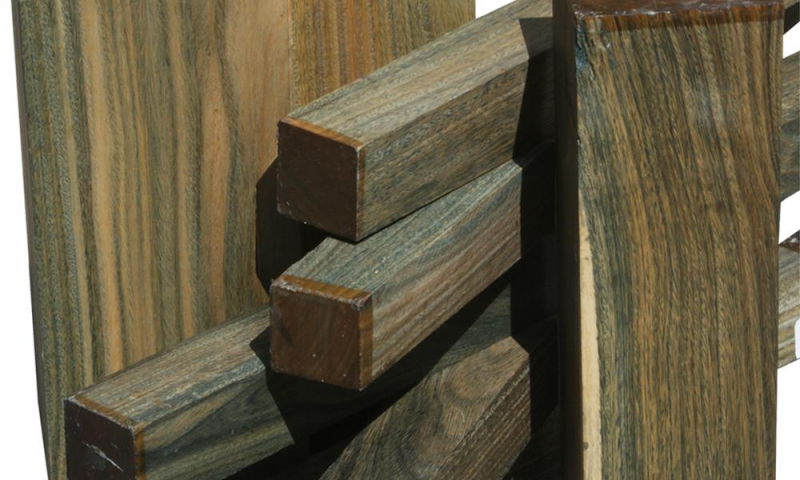
cookwoods.com 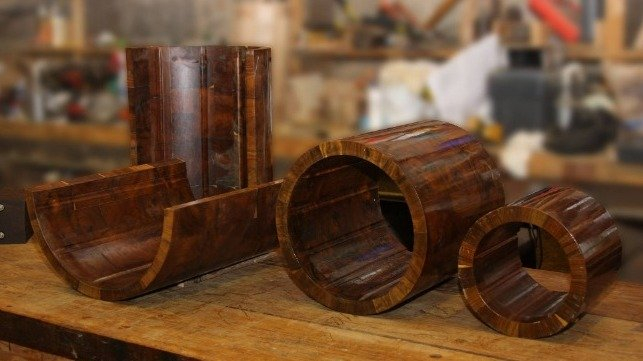
maritime-executive.com -
Fine furniture and cabinetry, ornamental veneers, elegant turnery, inlay work, joinery, flooring, and decorative paneling all use Bubinga wood. It is prized for its high strength-to-weight ratio, attractive detailing, and resemblance to rosewood. Bubinga is utilized for solid countertops and tabletops since it comes in vast widths and lengthy lengths. It's not uncommon to see flawlessly Quarter-sawn boards wider than 15 inches because it originates from huge logs.
Bubinga is also known as African rosewood, amazoue, amazique, kevazingo, and ovangkol, among other names. Inlays and high-end furniture, particularly by contemporary Arts & Crafts artisans, as well as high-end woodworking equipment such as smooth plane front knobs and rear handles, knife handles, and medium-end tobacco pipes, are all made from the wood.
Because of its mellow, well-rounded sound and diverse range of grain patterns, luthiers frequently use the wood for harps and other instruments such as bass guitars. Bubinga and ovangkol are commonly used by Warwick Bass and Ibanez. It's also been used in drum shells. Tama, for example, offers a variety of high-end drum sets featuring Bubinga plies in the shells. Bubinga is also used by Crafter on several of their instruments. Bubinga's shape and toughness make it a popular choice for both acoustic and electric guitars.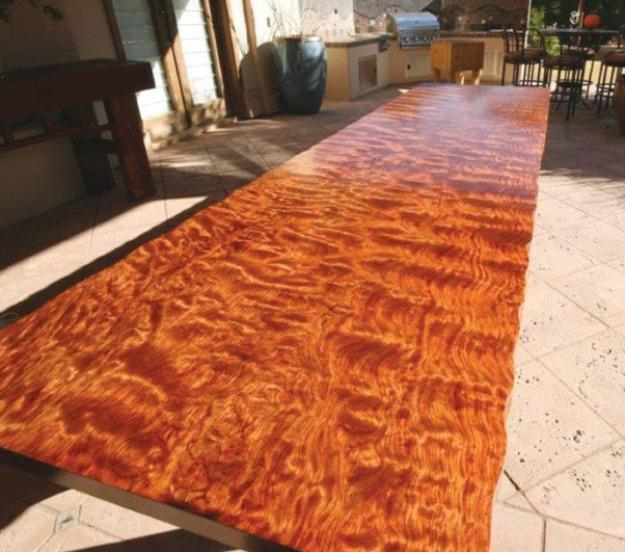
europages.co.uk 
woodworkerssource.com -
Agar wood, also known as aloeswood, eaglewood, or gharuwood, is a black resinous wood that is used in incense, perfume, and miniature carvings. When aquilaria trees become infested with a sort of mold, it forms in the heartwood (Phialophora parasitica). The tree produces a dark aromatic resin called aloes (not to be confused with Aloe ferox, the succulent often known as the bitter aloe) or agar as well as gaharu, jinko, oud, or oodh aguru in response to the attack, resulting in a very dense, dark, resin-embedded heartwood. In Indian-North Eastern tradition, the resin-embedded wood is prized for its particular aroma, and it is used to make incense and perfumes.
The loss of the wild resource is one of the key causes for agarwood's relative scarcity and high price. First-grade agarwood is one of the world's most costly natural raw resources, with prices as high as US$100,000/kg in 2010, yet adulteration of the wood and oil is prevalent, allowing for costs as low as US$100/kg in actuality. There are a variety of qualities and goods on the market, with quality varied according to geographical region, botanical species, age of the tree, cultural deposition, and the portion of the tree from which the agarwood stems. The present global market for agarwood is projected to be in the range of US$6–8 billion as of 2013, and it is fast rising.
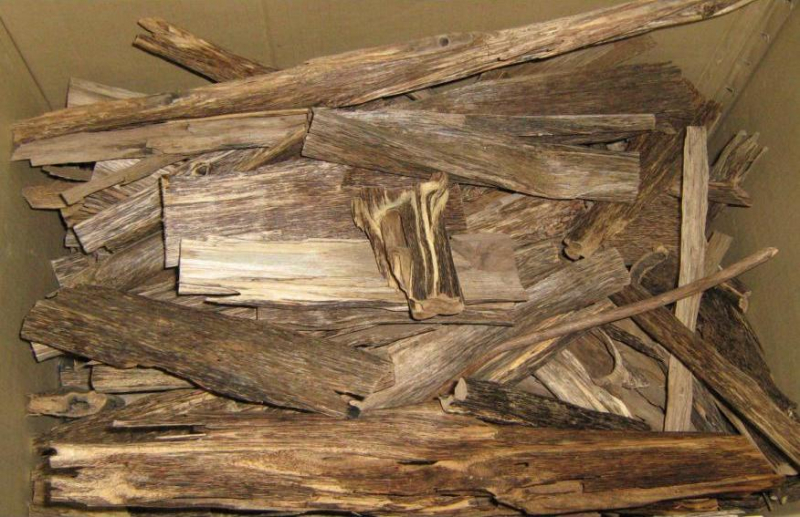
en.wikipedia.org 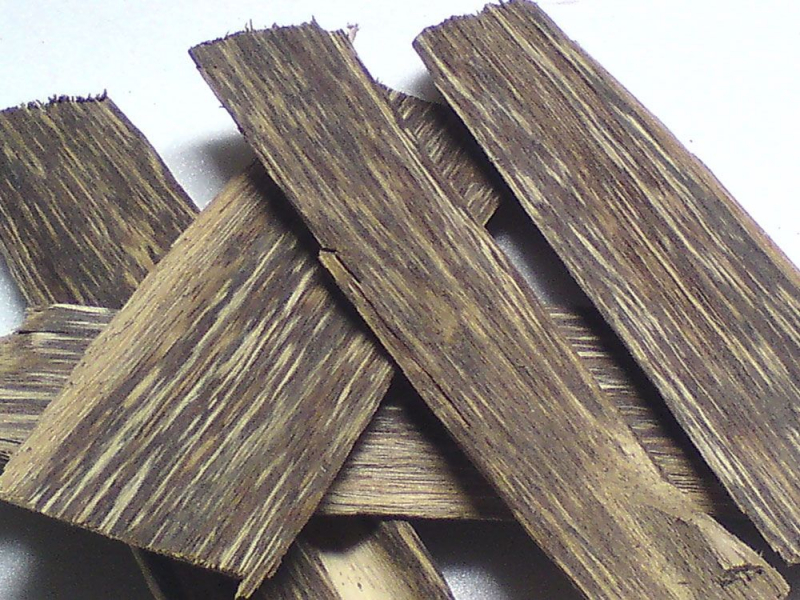
pinterest.com -
Dalbergia is a broad genus of small to medium-sized trees, shrubs, and lianas belonging to the Fabaceae subfamily Faboideae of the pea family. It was recently ascribed to the Dalbergieae, an informal monophyletic Dalbergia group. The genus is native to the tropical regions of Central and South America, Africa, Madagascar, and southern Asia, and has a vast distribution. Many Dalbergia species are valuable timber trees, prized for their ornamental and frequently fragrant wood, which is high in aromatic oils. The rosewoods are the most well-known, named after the scent of the wood when cut, but the genus also produces a number of other valuable woods.
Given its color and grain, species like Dalbergia nigra, also known as Rio, Bahia, Brazilian rosewood, palisander de Rio Grande, or jacaranda, and Dalbergia latifolia, sometimes known as Indian Rosewood or Sonokeling, have been widely utilized in furniture. In traditional Chinese furniture, a number of East Asian species play a significant role. Some Lepidoptera species use Dalbergia species as food plants, including Bucculatrix mendax, which feeds only on Dalbergia sissoo. Due to the presence of sensitizing quinones in the wood, the Dalbergia species is infamous for triggering allergic reactions.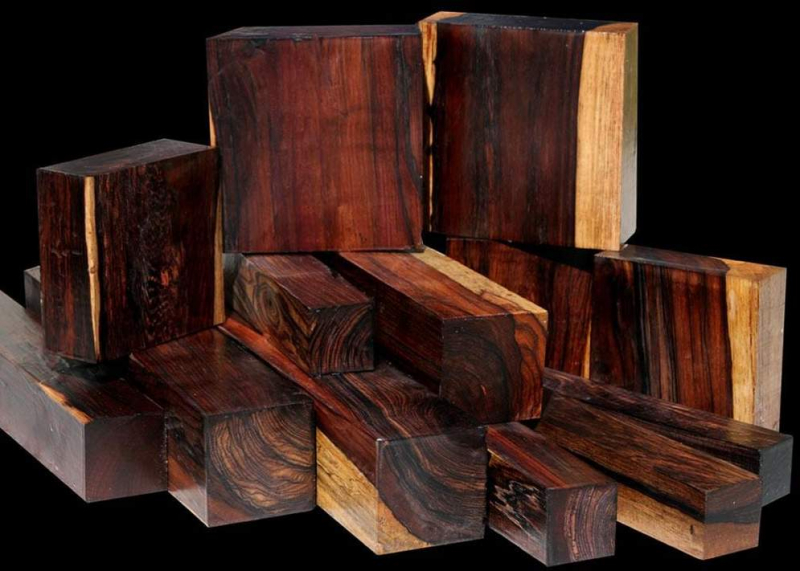
cookwoods.com 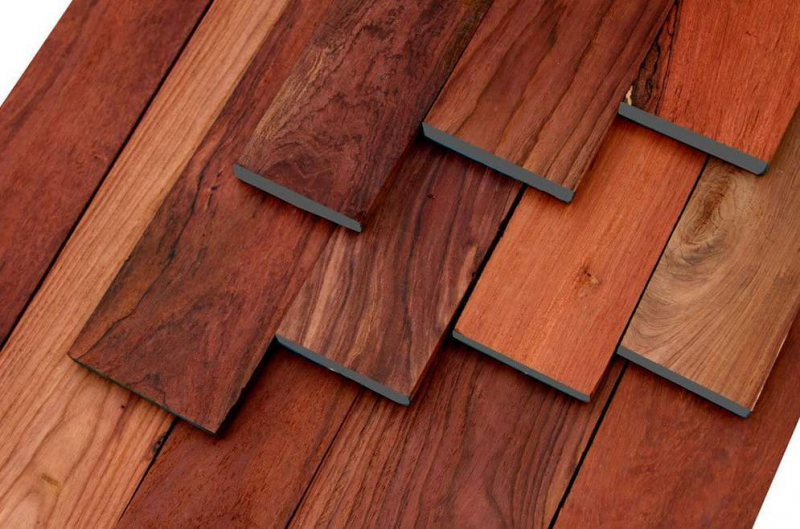
cookwoods.com -
Bocote is a tropical hardwood found in Mexico, Central America, and the Caribbean. It has a variety of grain patterns, ranging from straight to wild, as well as curved lines and swirls. The color spectrum includes golden brown, tan, and golden yellow. It's a robust and rigid wood with a medium grain that's hard, weighty, and dense. Some of the most common applications of this wood are making pool cues, cabinets, veneers, furniture, inlays, knife handles, and pens. It takes a moderately high natural gloss and polishes nicely with wax or polyurethane.
The body of the Bocote is yellowish-brown with dark brown to practically black stripes. With time, the color darkens. Also, particularly in flatsawn regions, the grain patterning can be quite remarkable. Many "eyes" and other figures can be found in Bocote; unlike knots, they do not appear to create any specific machining issues. On quartersawn surfaces, the heartwood is a dull golden brown tone with varied irregular marks and a beautiful ray flecked figure. It has a medium-coarse texture and is straight-grained.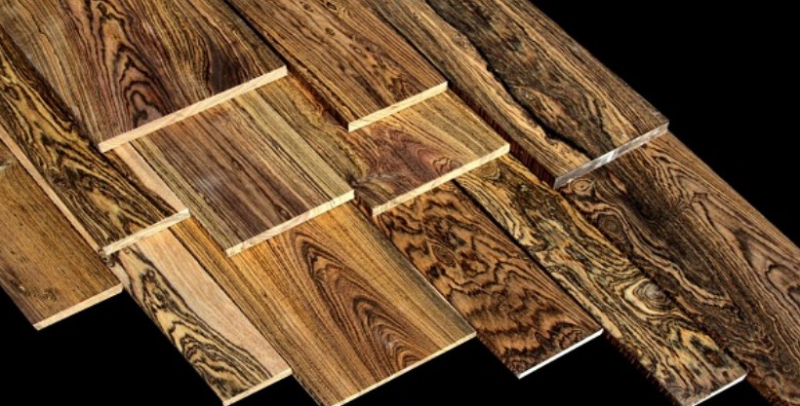
giamgiaxl.com 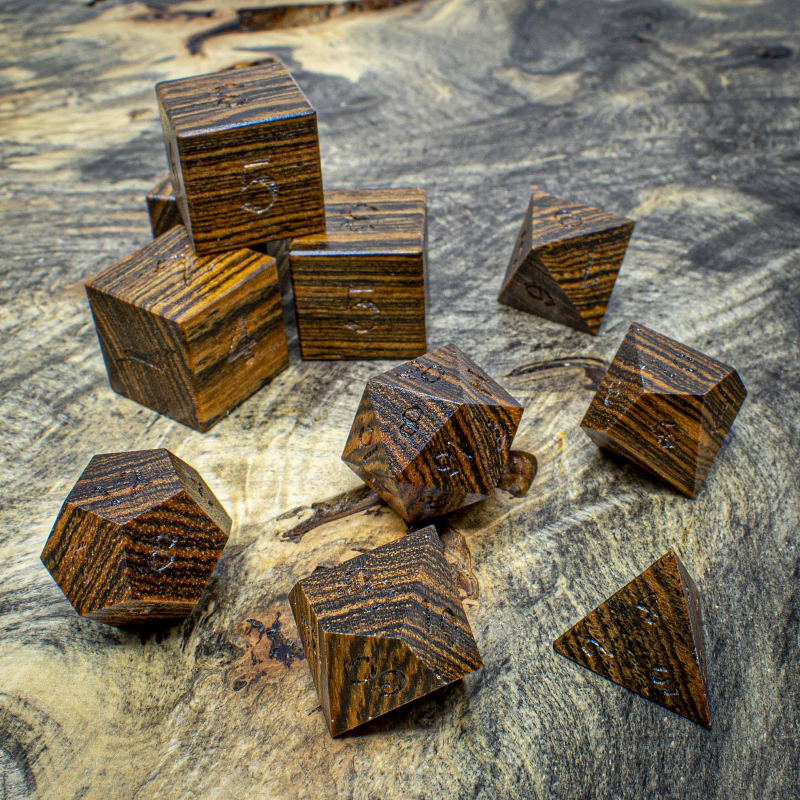
artisandice.com












